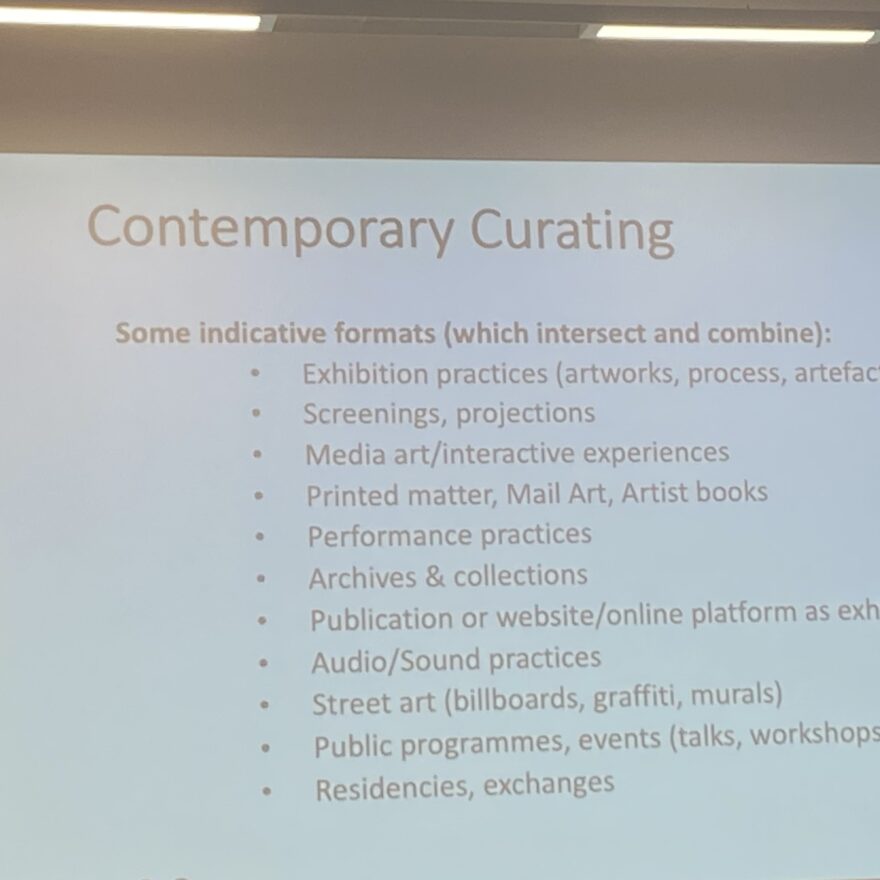Last week’s discussion focused on the ethics of curating and the innovation of curatorial forms. In the morning we will focus on Jean-Paul Martinon and Maura Reilly from the pre-class readings. We first exchanged our understanding and feelings about the core points of both. Martinon’s views reveal the deeper responsibility of curators as “cultural midwives.” When the exhibition space is no longer limited to the “White Cube”, but spreads to a wider range of shopping malls, parks and even virtual platforms such as social media, can the ethical issues of curation still rely solely on the norms of art institutions? Reilly’s “curatorial activism” infuses a manifesto for curatorial ethics with a program of action: she argues that when 80% of museum collections are still dominated by white, male artists, curators are complicit in “open dialogue.” Based on her views, we have a new thinking question in the discussion: What kind of curatorial form can make the cultural subject of the exhibition directly participate in the narrative construction, instead of being “represented” by occupying the right of narrative subject? After active discussion among the team members, we believe that the seemingly opposite perspectives of the two scholars are actually pointing to the ethics of contemporary curatorial work. On the one hand, the openness of flow is on the other hand, the urgency of change is on the other hand. Martinon uses speculation to structure the “ontological dilemma” of contemporary curatorial ethics. Reilly’s activism directly addresses longstanding structural oppression in the art world.
The afternoon discussion revolved around our “The Sleepwalkers” group’s own curatorial manifesto and expected curatorial form. JL first focuses on some indicative formats of contemporary curatorial exhibitions. During the group discussion, we will first discuss the group’s declaration of curatorial ethics. Since we want every sleepwalker to participate in the group discussion, each person can only contribute one idea. I propose Accessibility & Openness, that is, art should be open to all, and we need to consider multi-sensory and digital accessibility strategies to ensure that exhibitions are friendly and open to people of different abilities, languages and backgrounds. The opinions put forward by other students are also very interesting, such as Genuineness — sincerity and consistency between the works and the curatorial ideas. Although we are sleepwalkers, what we do is sincere and real, maintaining the original intention of artistic expression and maintaining the depth and intention of the works. We then discussed the curatorial forms of interest. Nonlinear Narratives and Multiple Storylines have been proposed, that is, visitors do not need to follow a single set tour order, but form completely different experiences of the exhibition according to their own moving routes. After the discussion we were inspired by a common item called a kaleidoscope. We assume that the exhibition has many entrances and exits, put an installation art in the center of the exhibition that can be reached in all directions, and then set the surrounding path into a similar style of passageway, and the audience can randomly choose a different route to enter. Of course, this scheme is still not perfect enough and needs further discussion and improvement. In the following courses, we will continue to supplement the details to support this scheme.
References:
Martinon, Jean-Paul. Curating as Ethics. Minneapolis and London: University of Minnesota Press, 2020.
Reilly, Maura. Curatorial Activism: Towards an Ethics of Curating. London: Thames & Hudson, 2018.




